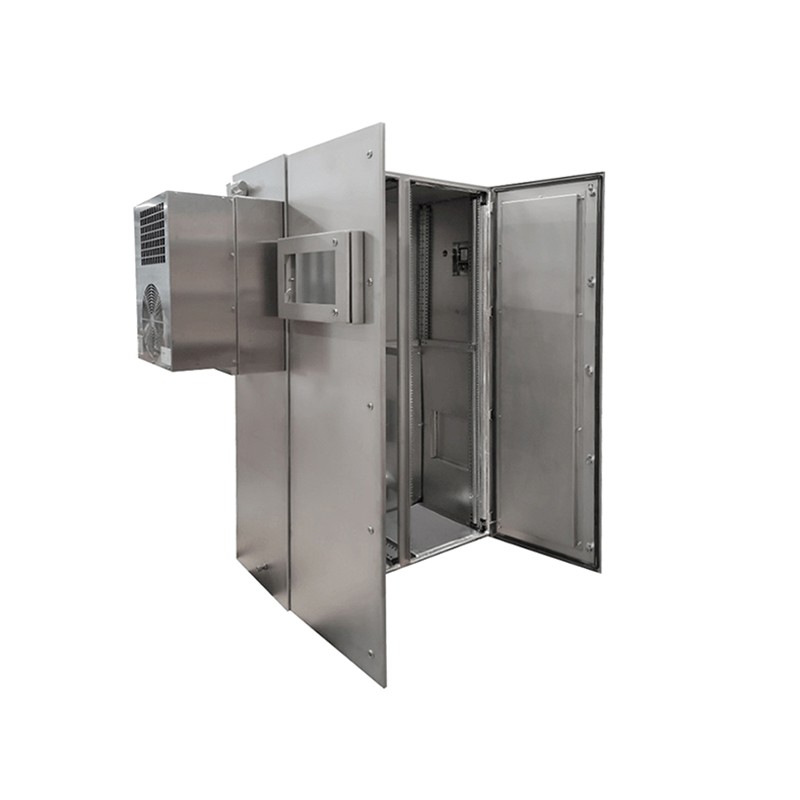
Explosionproof Pressurized Enclosures
Ex pxb | Ex pyb | Ex pzc
These explosionproof pressurized enclosures include panels, wall-mounted cabinets, and desks. They are designed for maximum safety and reliability in hazardous (explosive) environments. Each enclosure is custom-built, certified according to the ATEX Directive 2014/34/EU, and engineered to house electrical and electronic equipment, analyzers, displays, and more. The range is divided into three types, each with its own protection method:
Ex pxb (Zone 1 / Type X Protection)
This is the most common type in the range, offering a protection level of EPL Gb for Zone 1. Standard industrial equipment and components can be installed inside a (control) panel. Depending on the internal configuration of the Ex pxb panel, these are often supplied with an additional Ex de enclosure containing a circuit breaker to disconnect the power supply if overpressure is lost.
Ex pyb (Zone 1 / Type Y Protection)
This protection method is identical to Ex pxb, but the internal components are Zone 2 certified. As a result, the end user can apply a less strict shutdown philosophy. From a certification perspective, power disconnection is not required if overpressure is lost—only an alarm is triggered.
Ex pzc (Zone 2 / Type Z Protection)
These Ex pzc pressurized enclosures provide a protection level of EPL Gc for Zone 2. The protection method is identical to Ex pxb but offers a lower degree of safety. In this case, the power supply is not interrupted if overpressure is lost—only an alarm is given, as with Ex pyb.
Key Features
- Full compliance with ATEX Directive 2014/34/EU and harmonized standards.
- Available for use in gas and dust atmospheres (Group II, Category 2/3).
- Automatic purge and leakage compensation systems.
- Custom-built robust design with 2 mm thick stainless steel AISI 304L or AISI 316L for industrial durability.
- Optional integration of heating, cooling, and monitoring systems.
Benefits
- Safe installation of non-Ex equipment in hazardous environments.
- Potential cost reduction by avoiding the use of Ex-certified components inside the enclosure.
- Easy maintenance and servicing of the housed equipment.
- High flexibility for automation, control, and power distribution applications.